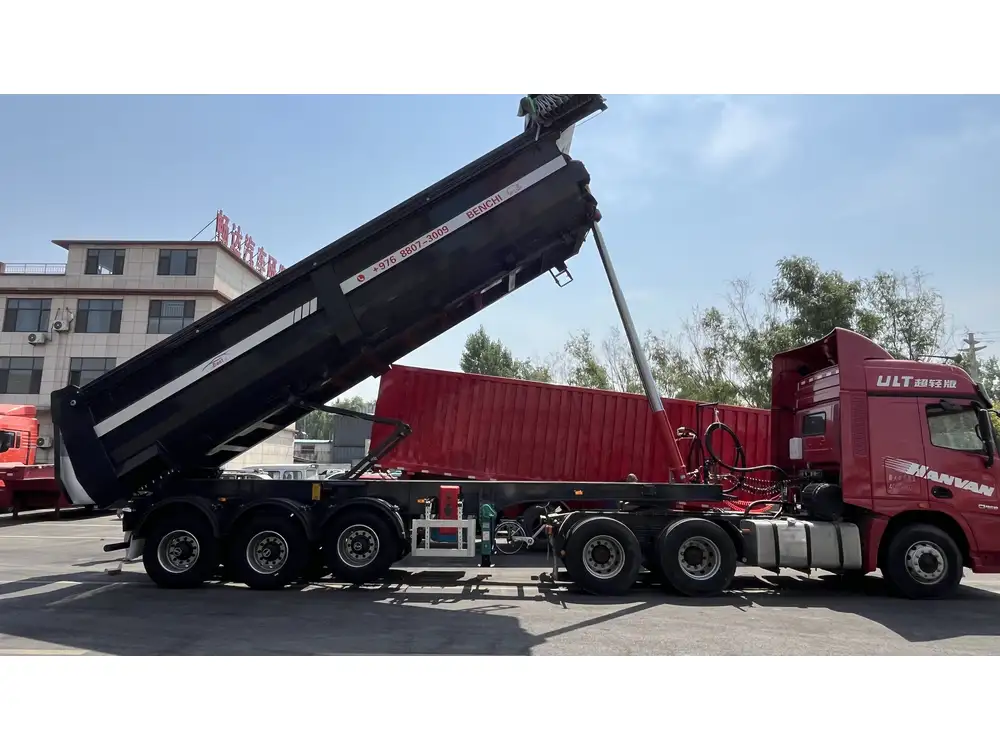When it comes to navigating the vast network of highways and byways that crisscross our nation, the size of the vehicles traveling them cannot be overstated. Among these vehicles, the tractor trailer truck—often synonymous with semi-trailer trucks—stands out not only for its sheer size but also for its critical role in freight transportation. For businesses, drivers, and policymakers alike, understanding the dimensions of these trucks is paramount. Here, we’ll delve into the intricate details regarding tractor trailer lengths, regulations governing them, and implications for both safety and efficiency.
Key Components of a Tractor Trailer Truck
Before diving into the specifics of truck lengths, it’s important to comprehend the construction and functional elements integral to a tractor trailer:
- Tractor Unit: This is the front part of the truck, which houses the engine, drivetrain, and cab for the driver. The tractor is responsible for providing the power to pull the trailer.
- Trailer Unit: The trailer is attached to the tractor and is generally where cargo is stored. Trailers vary in length and width depending on their purpose, whether it be for hauling containers, flatbed loads, or other freight types.
The length of a tractor trailer truck arises from the combined dimensions of the tractor and the trailer; it is essential to distinguish between the overall length, the tractor’s length, and the trailer’s length.
The Standard Length of Tractor Trailer Trucks
In the United States, the standard length for tractor trailer trucks can differ based on several factors including state regulations and the specific design of the tractors and trailers:
Overall Length: The maximum permissible length for a tractor trailer combination is typically 53 feet for the trailer itself. However, when adding the tractor, the entire combination often reaches a total length of 70 to 80 feet.
Component Typical Lengths Tractor Unit 20 to 25 feet Trailer Unit 48 to 53 feet Total Length 70 to 80 feet State Regulations: Different states may enforce stricter limits on lengths. For instance, some may restrict overall length to 65 feet or require specific permits for exceeding length thresholds, affecting route planning.

Variations in Tractor Trailer Types
The concept of the standard tractor trailer is nuanced by various types of trailers, which can lead to variations in length:
Flatbed Trailers: Common in hauling construction materials, lumber, and machinery, these trailers typically range from 48 to 53 feet, depending on load requirements and dimensions.
Reefer Trailers: Designed for temperature-sensitive goods, reefer trailers also generally come in lengths of 48 to 53 feet.
Tanker Trailers: Used for liquid transportation, tankers can also reach 53 feet, but their overall configuration may differ due to varying diameters and shapes.
Lowboy Trailers: Specifically designed for heavy equipment transport, lowboys often feature unique proportions, typically around 40 to 60 feet in length, necessitating precision during transport due to their low height.
Implications of Length on Compliance and Safety
Understanding the length of a tractor trailer is not merely an academic exercise; it has tangible implications for compliance with the law and safety on the roads.
Weight Regulations: The length of the combination often influences weight limits. Most states conform to the Federal Bridge Formula, which stipulates that the more axles a vehicle has, the more weight it can carry without exceeding legal limits—a crucial factor when considering tractor trailer design.
Maneuverability: A longer tractor trailer can present unique challenges, especially in urban environments. Drivers must account for the length when executing turns or navigating small roads; common challenges include:
- Turning Radius: A longer trailer necessitates a greater turning radius, making tight corners more challenging.
- Backing Up: Longer trailers are more difficult to maneuver in reverse, especially in congested areas or yards.
Best Practices for Operating a Longer Tractor Trailer
Given the complexities surrounding longer tractor trailers, here are essential best practices for safe operation:
Training and Certification: Ensure that all drivers undergo rigorous training, not only in operating larger vehicles but also understanding the dynamics of weight and balance.
Route Planning: Utilize GPS and route management tools that factor in vehicle length and height. These tools can help in avoiding low bridges and overpasses that might not accommodate longer configurations.
Regular Inspections: Just as important as knowing dimensions, operators should establish routine inspections that account for potential issues stemming from longer length—such as uneven load distribution and tire wear.
Awareness of Turning Radius: Drivers should familiarize themselves with their specific trailer length and practice turning and maneuvering in safe environments before hitting the road.

Conclusion
In conclusion, the question of “how long is a tractor trailer truck?” extends beyond a mere measurement to encompass safety, regulations, and the efficient transport of goods. From the overall length of the combination to the specifics of various trailer types, understanding these dimensions is crucial for compliance and safety on our roads. As manufacturers and stakeholders in this industry, instilling a comprehensive knowledge base not only reduces the potential for accidents but also fosters a culture of responsibility and efficiency in freight transport. By prioritizing education, awareness, and strategic planning, we can ensure that our highways remain safe and effective conduits for business and transportation.
In this ever-evolving landscape of logistical needs and regulatory frameworks, the significance of knowing and understanding tractor trailer dimensions cannot be overstated. As we look to the future, the interplay between technology, regulation, and education will shape the journeys of these formidable vehicles on our nation’s roadways. Ultimately, by embracing detailed knowledge and stringent practices, companies can enhance operational proficiency while contributing to a safer driving environment for all.



